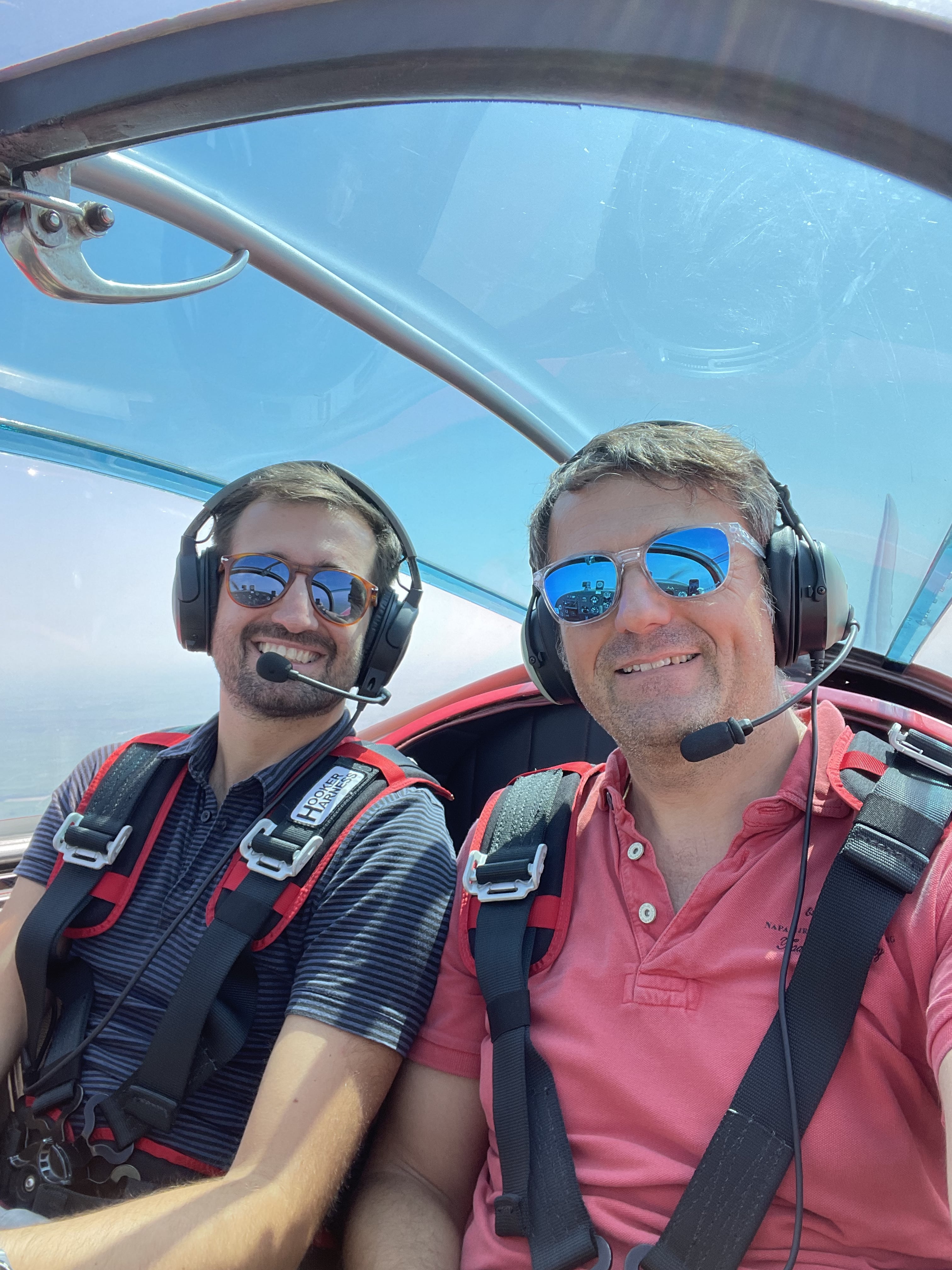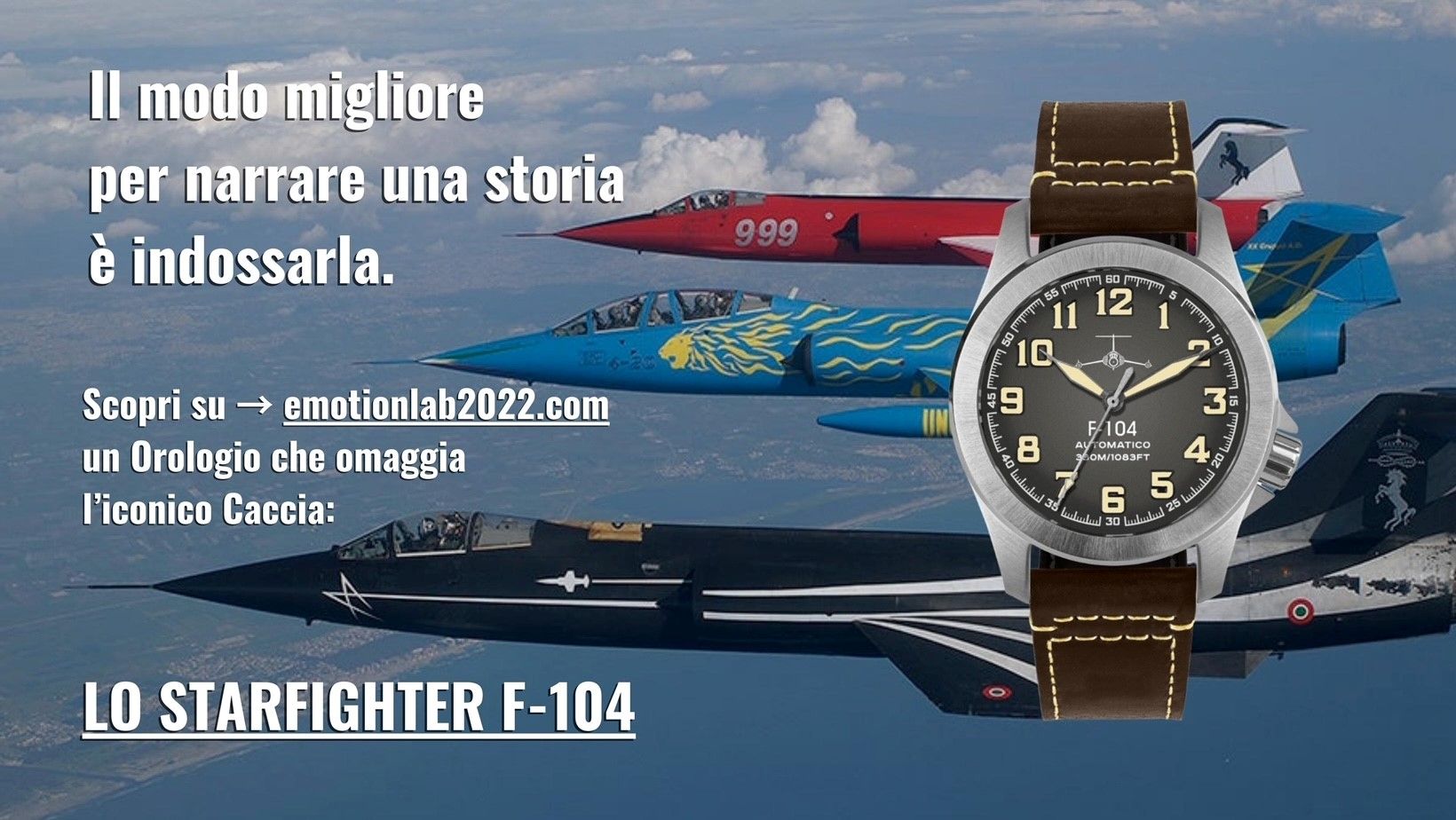The heat is extreme today. As I pick up Francesco and we head down to Vercelli to flight-test his F.8L Falco, he looks concerned about the performance of the plane in a day like this.
A laminar-flow profile, a pretty heavy airplane and a short grass strip, don’t really go along well together in July, in the middle of Pianura Padana, northern Italy.
As we drive to the field, Francesco goes deep into the history of the Falco.
The mythical engineer Stelio Frati, the creator of the “Marchetti”, the SF 260, had designed, before the Falco, another all-wooden airplane: the Rondone. This plane was almost unbeaten in the rally competition of the Giro di Sicilia, one of the most important speed and navigation race across Europe, at the time. Stelio Frati was the only one who could beat himself with another project. This time a two-seater, with simple construction and no compromises. Born to be fast, accelerate fast and win.
The Falco was born, with the project then sold to Aviamilano, the actual builder of the series planes.
An all-wooden structure, with a single piece tapered wing, build and adapted for every single serial number.
A flight control system mostly made of cables and pulleys, except for the final junction with the ailerons, more precisely controlled by rods.
As we pull out from the hangar the stunning Dark Red painted I-TINI, I start making my usual considerations. The mission of this plane is to race, be precise and fast. A small vertical tail, a very flat cockpit canopy and those short, thin and razor-sharp wings definitely make the point at first look. Francesco tells me that, in the first series of tests, they tried to cut out some more drag by designing the stabilizer with 10 cm less span. The Test Pilot Ettore Wengi did not look very happy and pleased after the test and Frati went immediately back to a wider horizontal tail.
Test Pilots are always so difficult to please…;))
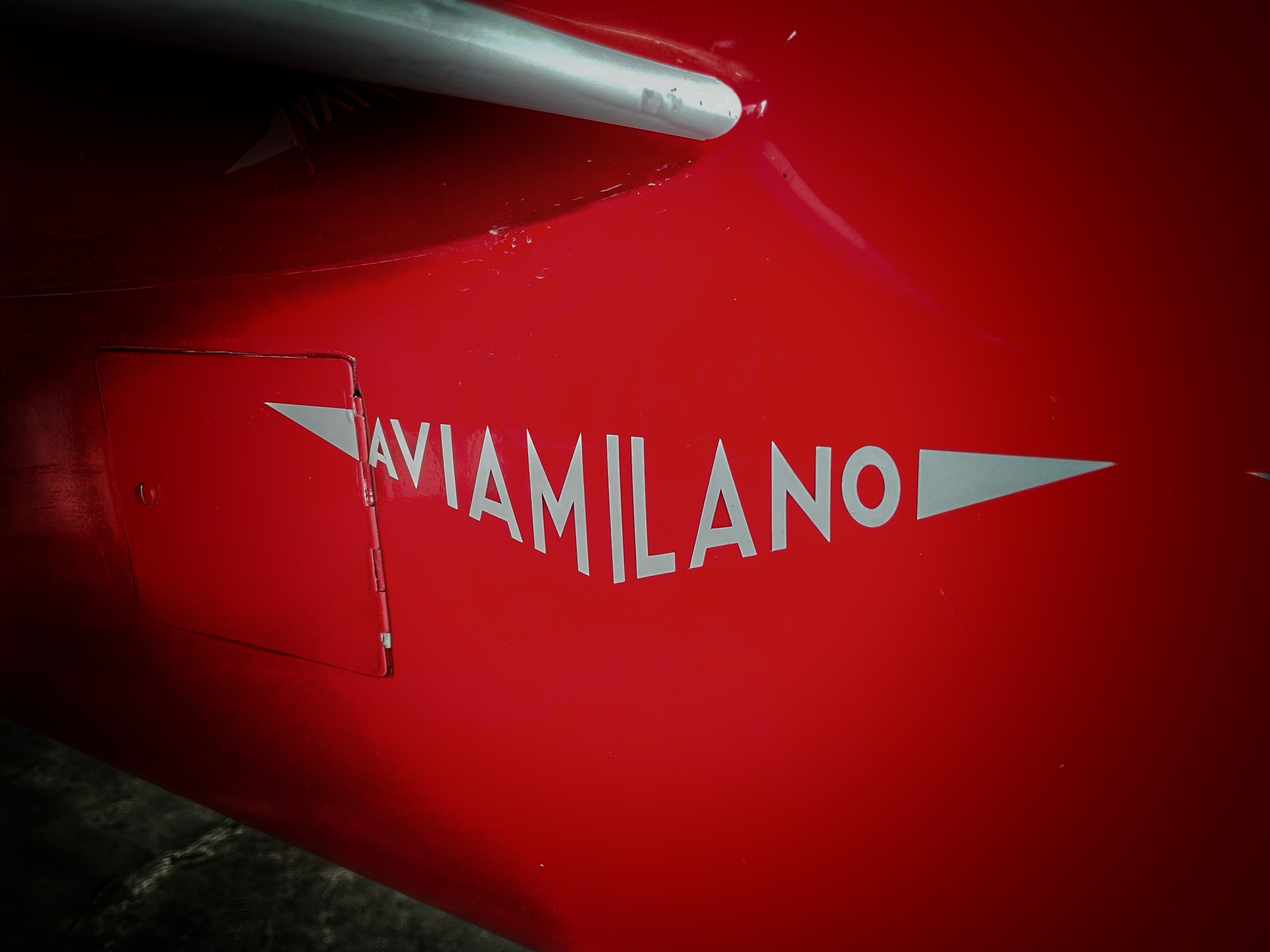
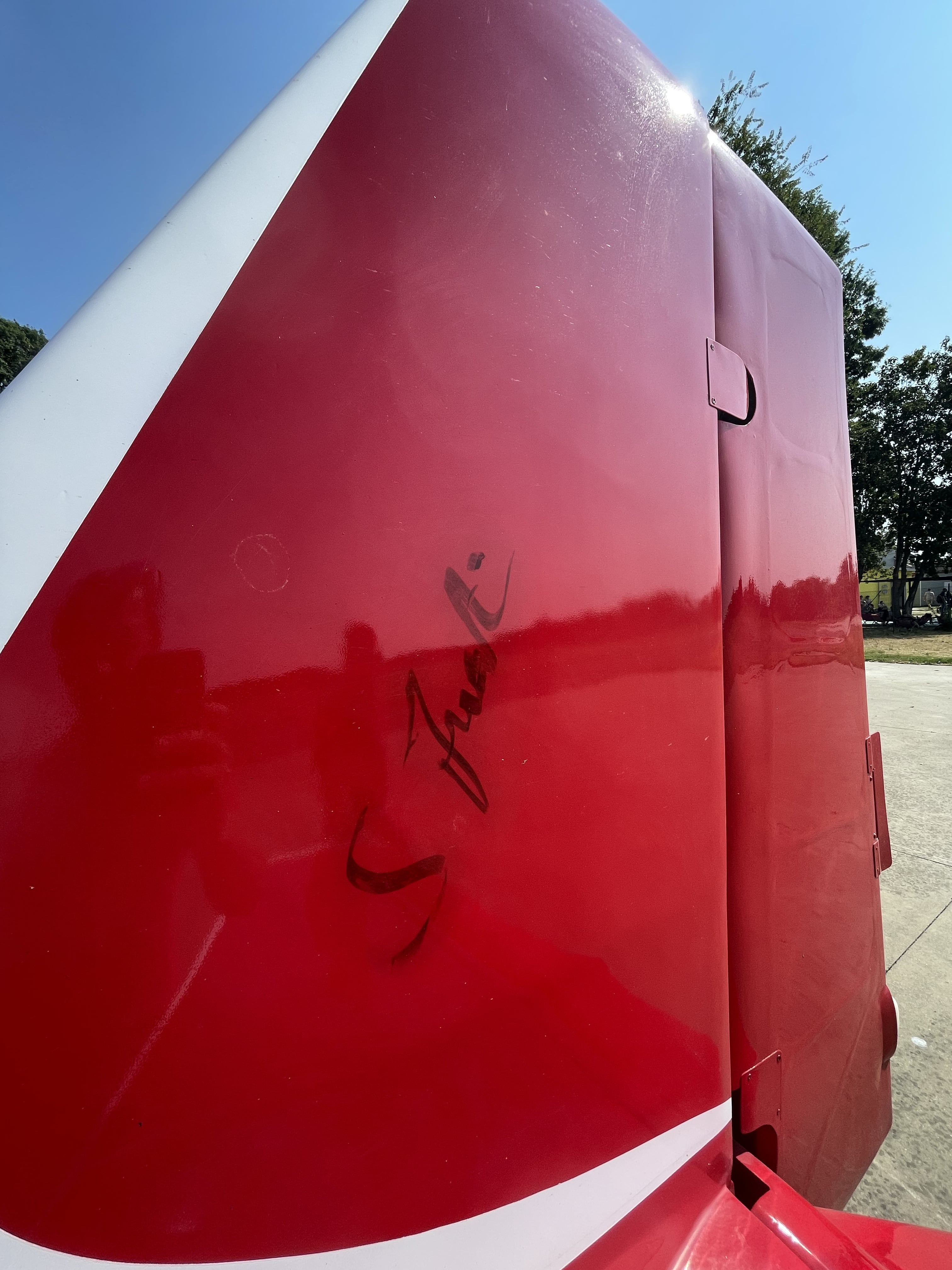
And then, this plane has an Italian taste. Speed, elegance, uncompromised characteristics. Its Red livery makes it taste a lot like a heritage Ferrari!
Taking the plane out of the hangar makes me realized that it must not be a light one. 615 kg of empty mass make I-TINI a pretty heavy Falco and Francesco’s choice to install a bigger Lycoming makes totally sense. The F8L I’m going to fly today has a 160 HP motor instead of the standard production engine that was originally a 150 HP Lycoming.
A two bladed constant speed prop and an electromechanical classical tri-cycle retractable landing gear complete my external inspection.
Francesco gets me in the left seat. It’s almost a warbird, after all, so I step-in with respect and avoiding hanging on parts that could be fragile and maybe impossible to find again on the market.
As I sit down, I immediately spot the first characteristic that the design sacrifices for performance: comfort! The canopy is so streamlined that for a guy like me, 183 cm tall, the accommodation comes already as a compromise. You can either slide down into the non-adjustable seat, and hide the runway behind the airplane nose, or fly with your headphone definitely touching the canopy. I’ll probably opt for seeing the runway on takeoff, and then slide a bit in flight.
The carburetor engine has no secrets for start and as I select both mags and feed a bit of throttle in, it reacts immediately to the spin of the starter with a nice roar.
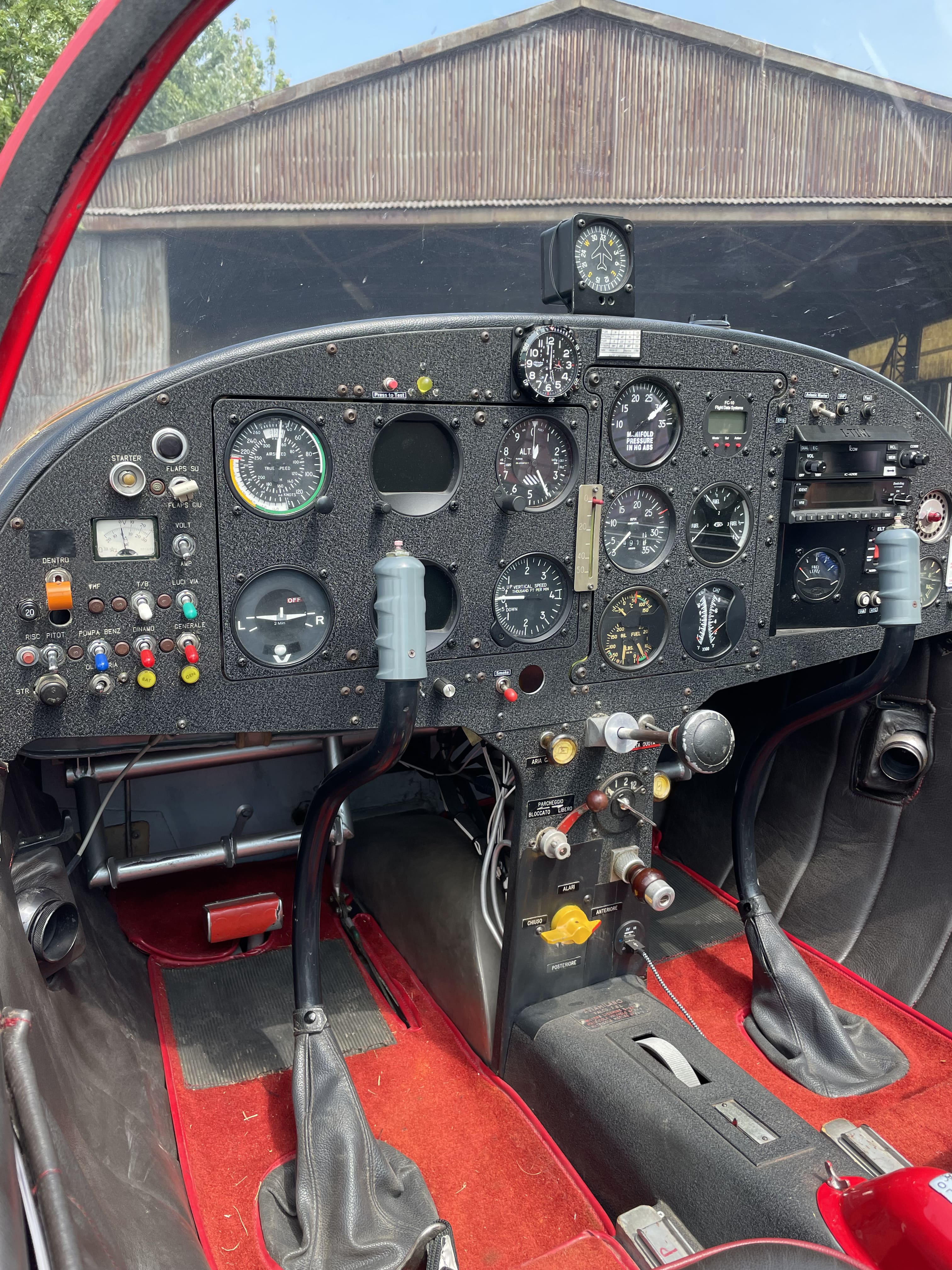
I start moving things around in the cockpit and, obviously, I perform a control sweep as well. Both the lateral and pitch axes controls are virtually free of friction and the breakout force to move the surfaces is almost impossible to feel on ground. Impressive characteristic for a cables-and-pulleys chain of control. I set the flaps to about 20 degrees, or few degrees less than that, with the switch that actuates the flaps electric motor. I also set the trim in take off position; It actually takes a while to move the trim forward. As much as I roll the manual trim wheel forward the indicator moves follows very slowly. There must be something about it and I’ll probably see it in flight!
During taxi the pedals are definitely stiff to move when connected to the steerable nose wheel and directing the plane where I want on an uneven grass strip is kind of annoying. On the other side, if you accept touching the canopy with your head, the visibility forward is not bad.
The most difficult thing in the Falco is braking during taxi. You have just one big brake pedal, that acts of both brakes that is installed on the lower center part of the rudder pedal assembly. You must push it and modulate the breaking with your heel. You choose if you want to use the right or the left, but there’s no other way you can do it.
I line up on runway 09, and Francesco looks happier that before, as we have a good 12 knots of headwind that will help us to beat the heat that is killing our performance today.
Full power and a very good dose of right rudder is what I set up for takeoff. The Falco bounces on the grass strip of Vercelli and at 65 knots, I start rotation. Not too aggressive though, as the “short field procedure” we are applying will have the wing of I-TINI, barely flying at that speed. 5 degrees is what I need, and I let the aircraft accelerate slowly through the power curve. Gear comes up not before 90 knots as I-TINI has mechanical doors that open during retraction: this will make the aircraft sleek and faster in flight but are increasing the drag substantially during gear travel.
One thing I immediately notice is how light the forces on the rudder become as the nose gear lifts off the ground; every contribution to the high gradients of force I was feeling must have been given by the connection between the pedals and the nosewheel itself plus the ground friction. The forces I feel now in flight are definitely very low.
Flaps up give a very modest nose-high pitching moment that is easily compensated by moving the longitudinal control few millimeters forward. The pitch is at least as sensitive as the rudder, with very light gradients and low breakout force from the trimmed position.
Talking of longitudinal trim, the mechanism moves the neutral point of the stick throughout a spring mechanism that I think is useful also to transmit to the pilot a bit of force feedback during maneuvering. The very slow actuating trim turns out to be probably designed on purpose for this plane. Even if the forces are so light, the Falco comes out from the first stability test I’ve done to be very stable and precise in capturing and maintaining a speed. A slower trim, in this case, make trimming terribly precise for the purpose of maintaining an airspeed and compensate well for the extreme sensitivity of the pitch axis, avoiding over-control by the pilot. This makes totally sense for an aircraft designed for the rally competitions.
The lateral control is light and harmonized with the pitch and rudder gradients, making the Falco sensitive but extremely precise and pleasant to fly. The cruise stability is positive as the phugoid converges in about one cycle at 160 knots and no dutch-roll is present as you go in and out with the ailerons from aggressive turns.
Maneuvering stability, that is always in doubt when you have such a light gradient of force in the pitch axis, is instead definitely good and Forces of the stick turns out to grow proportionally with the Gs.
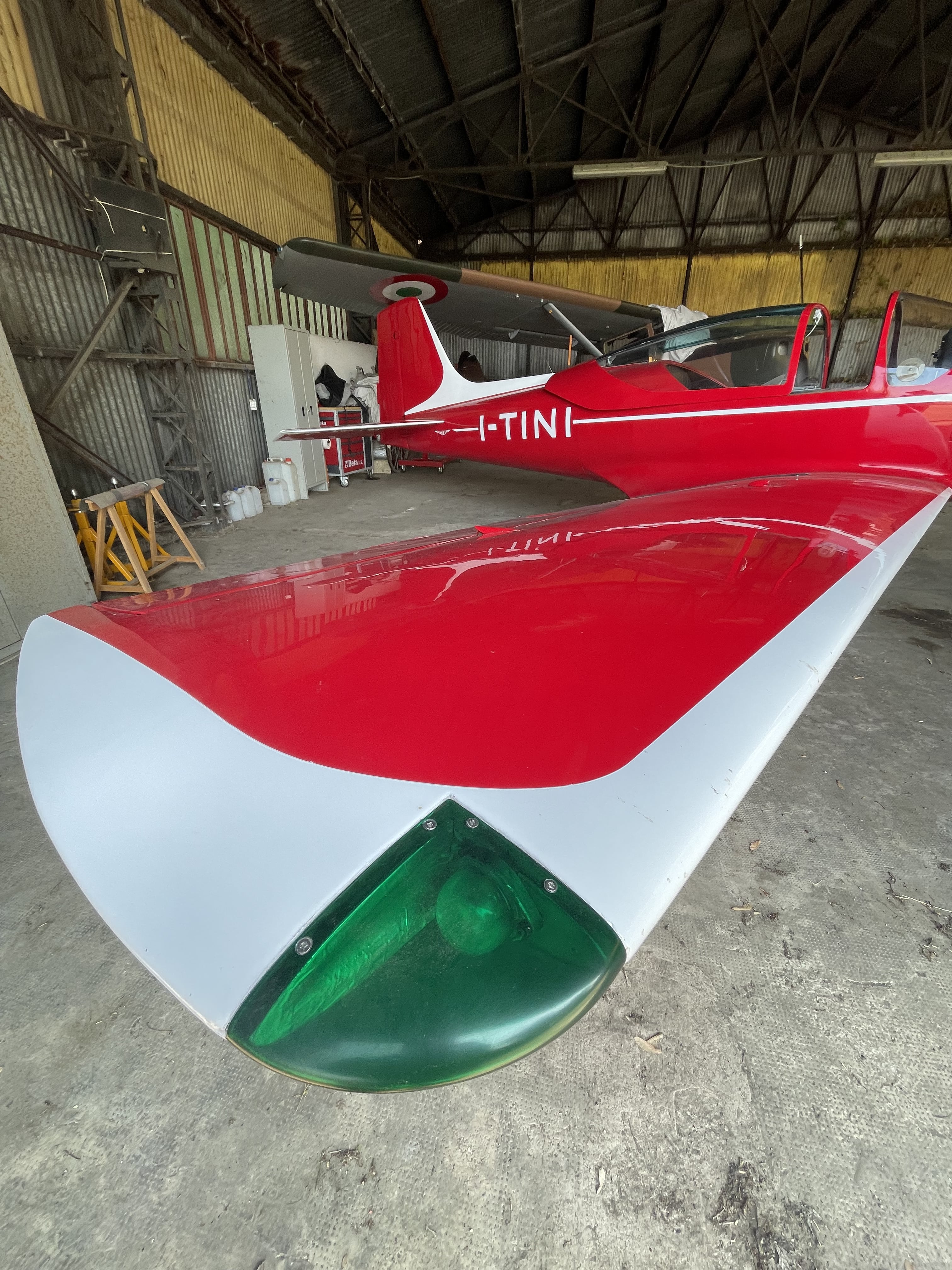
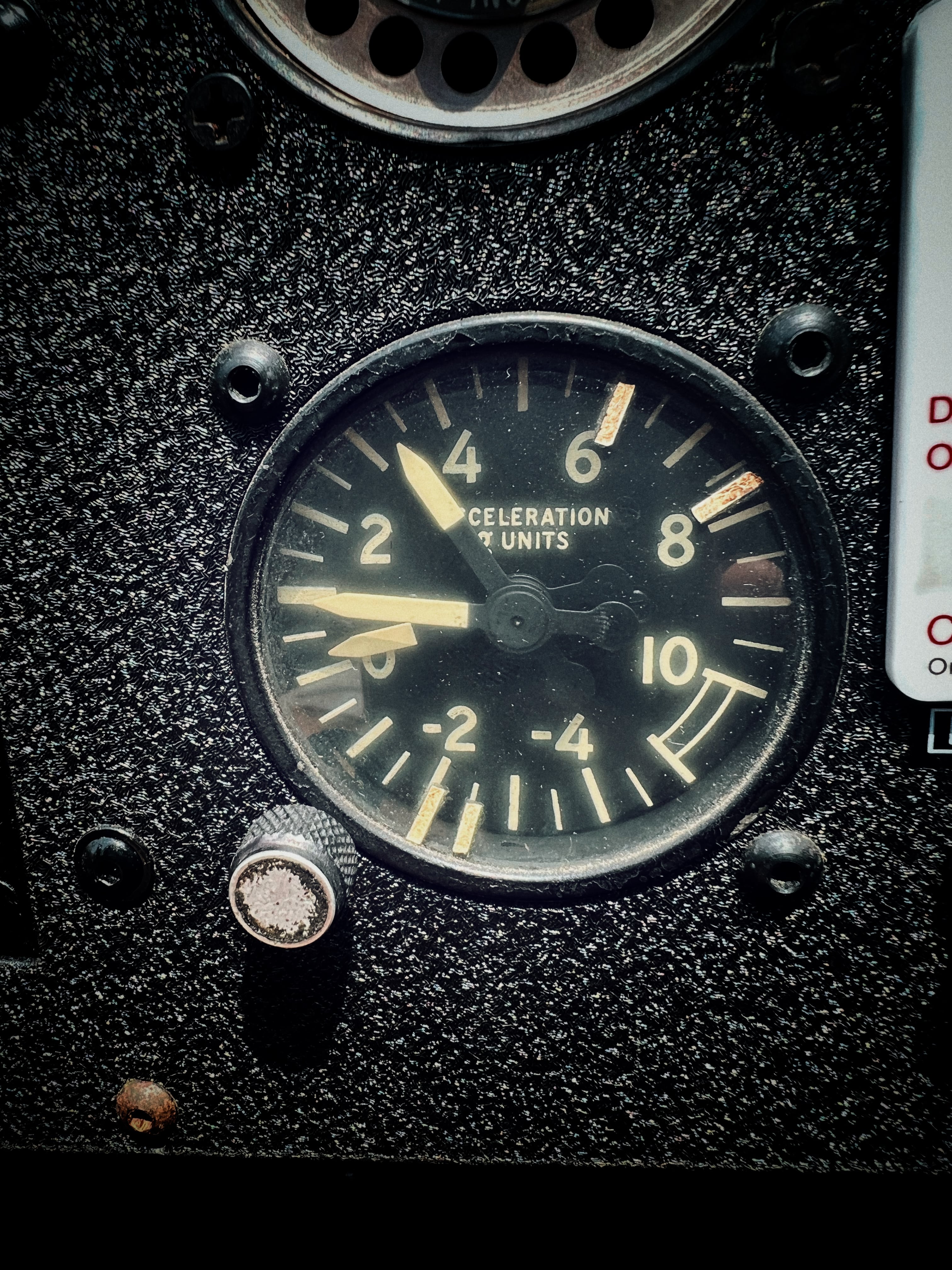
Setting the engine at “fast cruise”, 24” MAP and 2400 RPM, makes the aircraft accelerate easily to set a constant speed of about 150 knots of indicated airspeed at around 3000 ft of altitude. Even with a more economic 22” /2200 I-TINI wants to fly at not less than 135-140 knots, a very good regime also for tourism.
Well, it’s time to slow it down and understand how it behaves on the other side of his design point. it’s born to be fast, but it will have to land at some point!
RPM toward max and throttle idle, and I start my deceleration toward a clean stall. I’m also tasting the controls every 10 knots of deceleration, a technique that is called “EAR Check” (Elevator-Aileron-Rudder) to see if there’s anything wrong with the forces I feel on the different controls, as possible loss of authority or stability problem at low speed would be accompanied by a definite reduction of force gradients on the way to stall speed. It’s just a way to safely stall an airplane that you have never stalled before. I stop trimming at about 100 knots, so that I can reach the stall with a positive and definite nose pitching down that will safely recover even with hands off controls.
There’s maybe a “hint” of buffet onset at 68 knots, but then, as we hit exactly 65, the right wing goes down so aggressively that takes me by surprise. The rotation is violent and sudden, and I neutralize controls and push the stick toward zero G, just to be sure that the stall angle of attack is broken. Francesco laughs and looks at me saying: “fun, isn’t it?”. Most of the Falco’s around the world have stall-inducing strip on the leading edge that make the aircraft more docile and easier for everyone, but I-TINI, that kept the original wing, takes all the odds of a short, tapered wing using a laminar flow profile that makes it a race monster, but also a plane that you have to fly with surgical precision, if you don’t want to accidentally step on the natural drawbacks of an uncompromised design.
I kind of felt the same when I was flying F-104s, back in the days…
Stalling with 20 deg flaps is not different and the wing drops even more aggressively even if with a bit more warning buffet than the clean one.
Well, it’s time for a bit of real fun now. Aerobatics are what I was waiting for, as my deep experience on the SF260 needed a confrontation with another Frati design, as I’ve flown before all the aerobatic Frati’s but the Falco.
I set the prop at 2600 RPM and start with some wingovers, maneuvers that I love to perform both for my pure pleasure, but also for the good hints that gives you on harmonization of flight controls under Gs and on the acceleration-deceleration tendency of the test plane, staying anyway always inside safe attitudes.
As unusually light and sensitive the controls are, they stay super harmonic during maneuvering. It’s just a matter of a couple of turns and climbs and the Falco pushes you for more!
The speed for a loop is 170 knots but I wrongly read the MPH value on the double scaled airspeed indicator, ending up pulling the first loop at 150 knots. I feel the plane light on top, but the very good and continuous nose tracking rate even at slow speeds make the screwed-up maneuver safe and almost uneventful.
I go for another good one this time, and the maneuver comes out easy and clean, with just a slight rudder needed during the vertical development and with an energy that looks always very high even when inverted. The tendency to accelerate is anyway evident and needs a bit of care during nose low maneuvers. Both in the loop and in cloverleafs quarters as the attitude passes through 30deg nose low you need to be either pulling out power or pull a bit more than expected to catch the speed/altitude you want, without getting dangerously close to VNE, not so difficult to reach. I continue with barrel rolls and more wingovers to get to a pure aileron roll that I perform at full stick deflection at 140 knots or a bit less. The roll rate is not astonishing, something that I would eyeball at about 120deg/sec, but more than enough to have fun and safely get out on any unwanted situation. I’d love to set up for a spin test now, but we would need to climb for quite a bit of time, with today’s density altitude, and we leave it for the next time.
As we descent down and enter the pattern Francesco prepares me for the landing; a final with about 80 knots full flap and a steep glidepath is what is recommended for the Falco, and my stall experience 20 minutes ago convinces me of that. You need energy and cannot afford to slow down too much in short final. A well continuous and rounded up flaring maneuvers is what I’m planning for. Gear down, full flaps on downwind and we enter base turn with quite a bit of power to keep the speed. I think full flap setting makes the drag rise a lot, compared to the clean plane and this makes the continuous use of the throttle quite a good control to nail the speed you want. No backside approaches here, strictly use throttle for speed and pitch for glide.
The runway is short and I know that for the first landing ever on a such a demanding aircraft is not the best option, but I think I got some good points during my flight so I go down confident over the trees on final slowing just a bit, around 75, and keep a bit of engine in, without trying to flare all the way to full back stick, but instead touching with a bit of excess speed, that is safer and maybe the best option for the F8L.
I touch down with the main gear and slowly lower down the nose going immediately with my right heel to press the awkward brake actuator, that anyway works perfectly for the runway length remaining.
I cannot thank my friend Francesco enough for this possibility, as around the world flying this jewel of engineering is becoming more and more difficult for maintenance, the attention and passion you need to cope with. Piloting skills and the training you need to own such a piece of art, are not second to passion!
Stelio Frati did not disappoint me this time either, and there must be a reason if people around the word keep on flying and maintaining his planes. And yes, I can proudly tell everyone of you flying his machines, the pleasure and satisfaction you feel at the end of your day, has a strong Italian flavor.
Jack
